
Article Summary: Hot Springs National Park Facts
Hot Springs National Park Facts! In this article, More Than Just Parks provides you with 12 fantastic facts about one of America’s most magnificent national parks.
More Than Just Parks is your one-stop-shop when it comes to learning everything you’ll need to know about America’s national parks. We’ve got expert guides, beautiful photos, helpful tips, breathtaking films and so much more.
I’ve been to so many of these amazing places since retiring from teaching in 2018. Did I mention that I taught history? I spent a lifetime teaching about the history behind some of these natural wonders. Then I got to see them firsthand. And now I’m sharing some of the incredible stories about these beautiful places with you. It doesn’t get any better than that!
More Than Just Parks takes a deeper dive with its national park facts. We’ve done our homework so that you’ll get more than you bargained for.
Without further ado, let’s dive in.
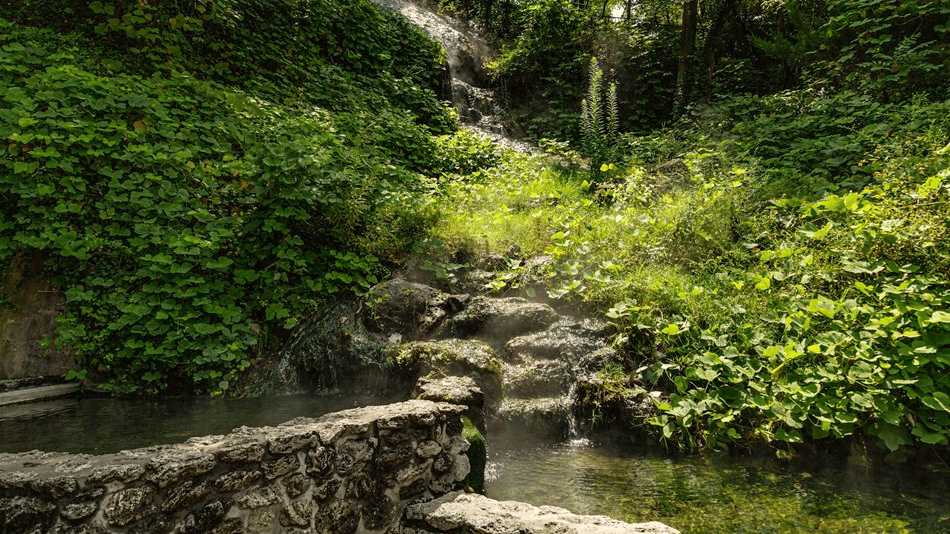
Table Of Contents: Hot Springs National Park Facts
Hot Springs National Park Facts
- Facts About Hot Springs National Park
- Hot Springs National Park Facts
- Top 5 Hot Springs National Park Facts
- 1. The Dunbar-Hunter Expedition Came To Hot Springs In 1804
- 2. The Area Which Is Now Hot Springs National Park First Became Part Of The U.S. As A Part Of The Louisiana Purchase
- 3. Hot Springs Was Originally Set Aside As A Reservation
- 4. A Devastating Fire Destroyed Much Of Hot Springs
- 5. Hot Springs Actually Supports 47 Naturally Heated Springs
- Top 10 Hot Springs National Park Facts
- Top 12 Hot Springs National Park Facts
- Meet The Parks Brothers
- Map Of Hot Springs National Park Facts
- We Hope You’ll Follow Our Journey
- Top 5 Hot Springs National Park Facts
Facts About Hot Springs National Park
Some Basic Facts About Hot Springs National Park
Hot Springs National Park is a beautiful and historic park located in Arkansas. The park covers over 5,500 acres of land and is home to several natural hot springs, which are the park’s main attraction.
The hot springs in the park were formed over thousands of years as groundwater flowed through underground layers of rock, picking up minerals and heat along the way. The hot water then rises to the surface, where it is used to fill several bathhouses in the park.
The park’s landscape is diverse, with forests of oak and pine trees, grasslands, and wetlands. The park is also home to a wide variety of plant and animal life, including white-tailed deer, bison, and over 200 species of birds.
There are many ways to explore and enjoy Hot Springs National Park. Visitors can take a dip in the park’s hot springs, go hiking or biking on the park’s trails, or even go fishing or picnicking in the park’s streams and meadows. There are also several historic lodges and cabins located within the park, providing comfortable accommodations for visitors.
Hot Springs National Park is a beautiful and historic place, offering visitors the opportunity to experience the beauty and majesty of the natural world in a truly special setting. It is a great destination for outdoor enthusiasts, with plenty of opportunities for hiking, camping, and other outdoor activities.
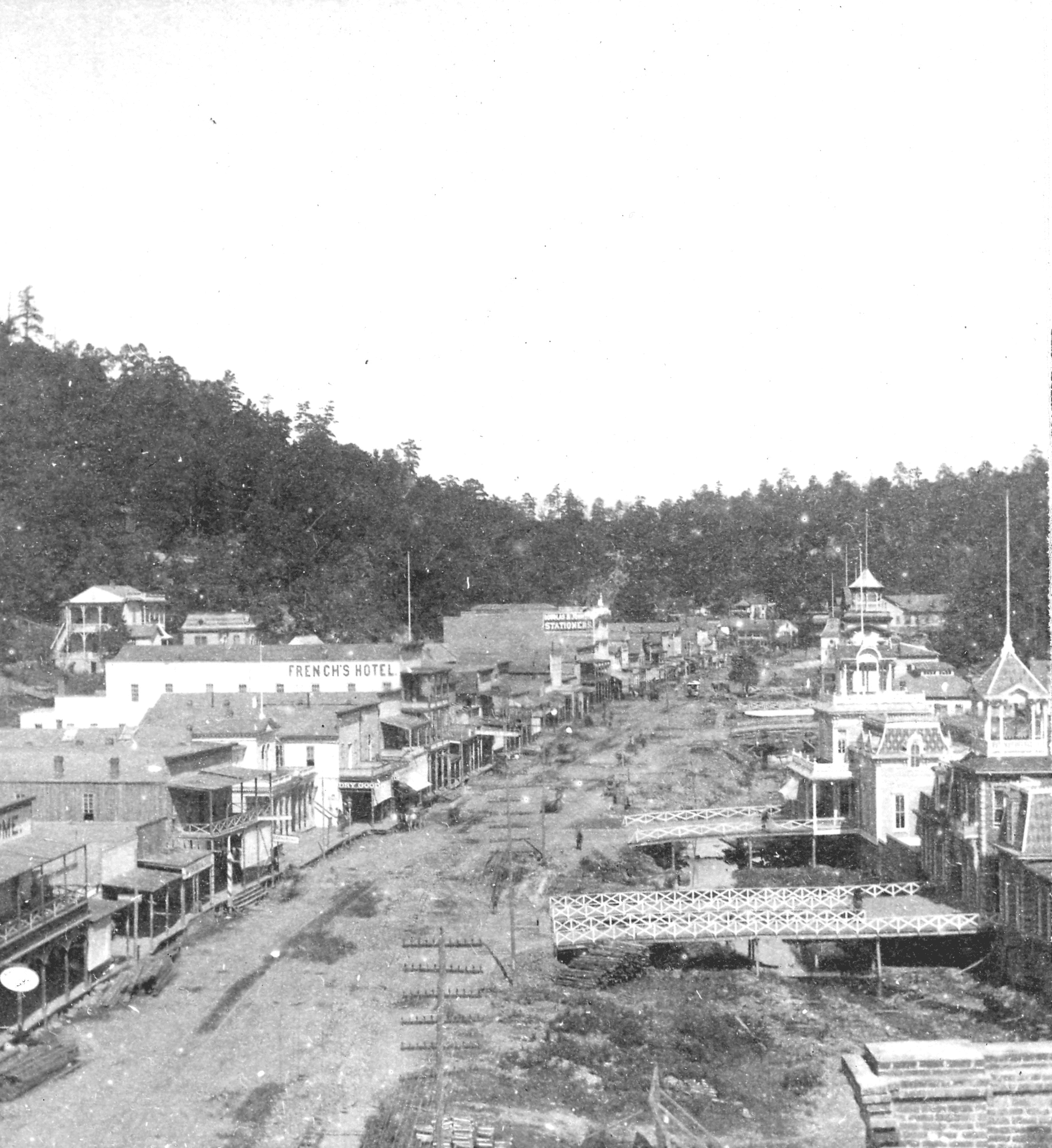
Here Are Some Basic Facts
- Location: Hot Springs National Park is an American national park in Garland County, Arkansas, adjacent to the city of Hot Springs, the county seat.
- Acreage: At 5,550 acres, Hot Springs National Park is the smallest national park in the United States.
- Visitation: Hot Springs National Park had 2,162,884 recreational visits in 2021, topping the previous visitation record set in 1970. Additionally, the park surpassed 100 million accumulated recreation visits since reporting began in 1904.
- Highest Elevation: The highest point in the park, Music Mountain at 1405 feet. It’s located within the West Mountain section at the westernmost point of Sunset Trail.
- When Did It Become A National Park? In 1916 the National Park Service was formed and, in 1921, Hot Springs Reservation changed its name to Hot Springs National Park. This change made it the 18th National Park in the Service.

CHECK OUT: 7 EPIC Arkansas National Parks
Hot Springs National Park Facts
Top 5 Hot Springs National Park Facts
1. The Dunbar-Hunter Expedition Came To Hot Springs In 1804
As a retired history teacher and lifelong history buff, I always like to start with a historical overview.
So, with that in mind, the first of our fascinating Hot Springs National Park Facts involves an expedition commissioned by President Thomas Jefferson.
Most Americans have heard the story of Lewis and Clark and the Corps of Discovery that was sent by Thomas Jefferson to explore the new Louisiana Purchase from 1804-1806.
But did you know that it was one of only four ventures commissioned by Thomas Jefferson.
Between 1804 and 1807, President Jefferson sent Lewis and Clark into the northern regions of the Purchase; Zebulon Pike into the Rocky Mountains, the southwestern areas, and two smaller forays; Thomas Freeman and Peter Custis along the Red River; and William Dunbar and Dr. George Hunter to explore the “Washita” River and “the hot springs” in what is now Arkansas and Louisiana.
William Dunbar was a Mississippi planter/scientist/surveyor and George Hunter was a Philadelphia chemist/apothecary. Together, they led that expedition on the Red, Black and Ouachita Rivers up to “the hot springs.”
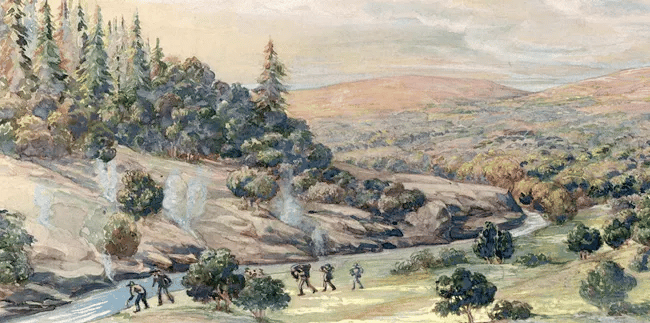
American Spa
The two men and their crew mapped, described flora and fauna, tested the waters of the Hot Springs area and sent Thomas Jefferson the first report on the huge territory that had just been purchased from France.
Soon a bustling town grew up around the hot springs to provide services for health seekers. The resultant bathing industry led to Hot Springs becoming known as the “American Spa.”

CHECK OUT: 11 AMAZING Facts About Acadia National Park
2. The Area Which Is Now Hot Springs National Park First Became Part Of The U.S. As A Part Of The Louisiana Purchase
Speaking of Lewis & Clark, another one of our intriguing Hot Springs National Park Facts is that the area which is today Hot Springs National Park actually was a part of the United States as a part of the historic Louisiana Purchase.
The Louisiana Purchase was the acquisition of the territory of Louisiana by the United States from the French First Republic in 1803.
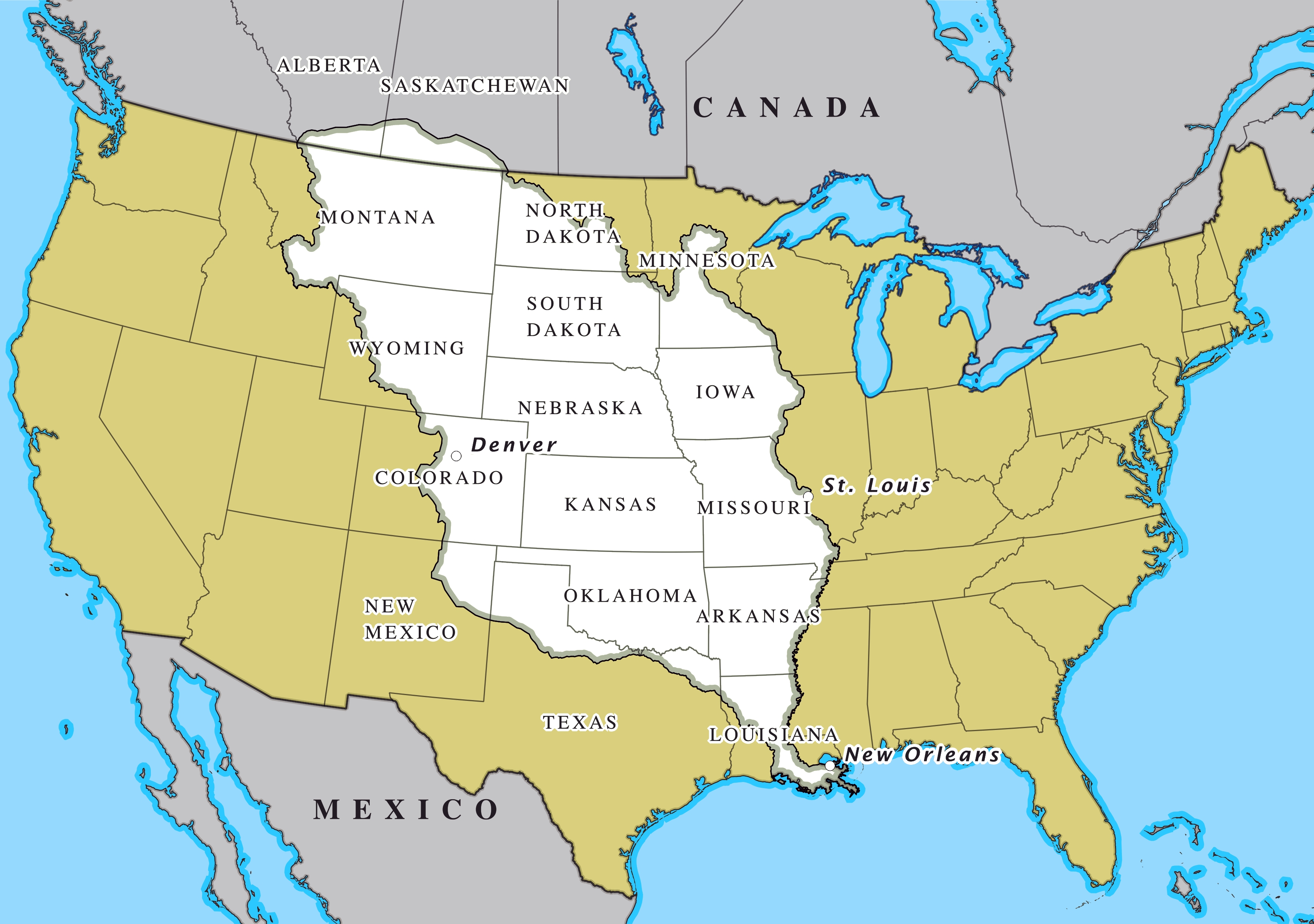
Impact Of The Louisiana Purchase
The Louisiana Purchase nearly doubled the size of the United States. It was one of the most colossal land transactions in history, involving an area larger than today’s France, Spain, Portugal, Italy, Germany, Holland, Switzerland and the British Isles combined.
All or parts of 15 Western states would eventually be carved from its nearly 830,000 square miles, which stretched from the Gulf of Mexico to Canada, and from the Mississippi River to the Rocky Mountains.
And the price, a mere $15 million, or about four cents an acre, was an incredible bargain.
To learn more about the Louisiana Purchase, I recommend: Jefferson’s Great Gamble: The Remarkable Story of Jefferson, Napoleon and the Men behind the Louisiana Purchase by Charles Cerami.
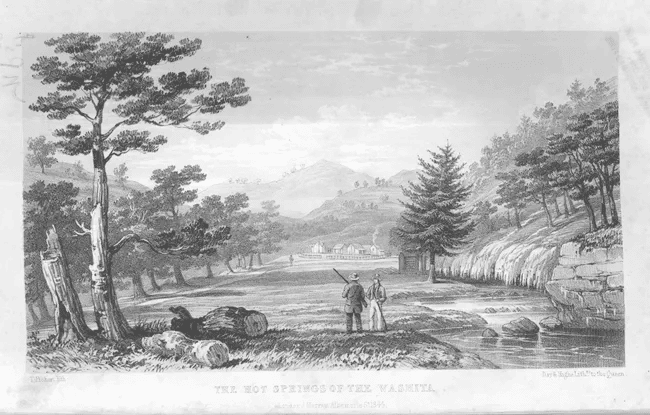
CHECK OUT: 11 AMAZING Facts About Arches National Park
3. Hot Springs Was Originally Set Aside As A Reservation
One of the lesser known Hot Springs National Parks Facts has to do with early efforts to preserve and protect this unique place.
The first permanent settlers to reach the Hot Springs area in 1807 were quick to realize the springs’ potential as a health resort.
By the 1830s, log cabins and a store had been built to meet the needs (albeit in a rudimentary way) of visitors to the springs.

According to the National Park Service, to protect this unique national resource and preserve it for the use of the public, the Arkansas Territorial Legislature had requested in 1820 that the springs and adjoining mountains be set aside as a federal reservation (not to be confused with the Indian reservations being established around the same time).
On April 20, 1832, President Andrew Jackson signed legislation to set aside “…four sections of land including said (hot) springs, reserved for the future disposal of the United States (which) shall not be entered, located, or appropriated, for any other purpose whatsoever.”
The Oldest National Park?
Now here’s another interesting fact. This actually makes Hot Springs National Park the oldest national park among current National Park units, predating Yellowstone National Park by forty years.
It wasn’t until 1921, however, that it became Hot Springs National Park after the establishment of the National Park Service in 1916.
As such, while America’s 18th national park actually predates Yellowstone National Park by 40 years, it wasn’t officially a national park when founded so technically it’s not considered the oldest national park.
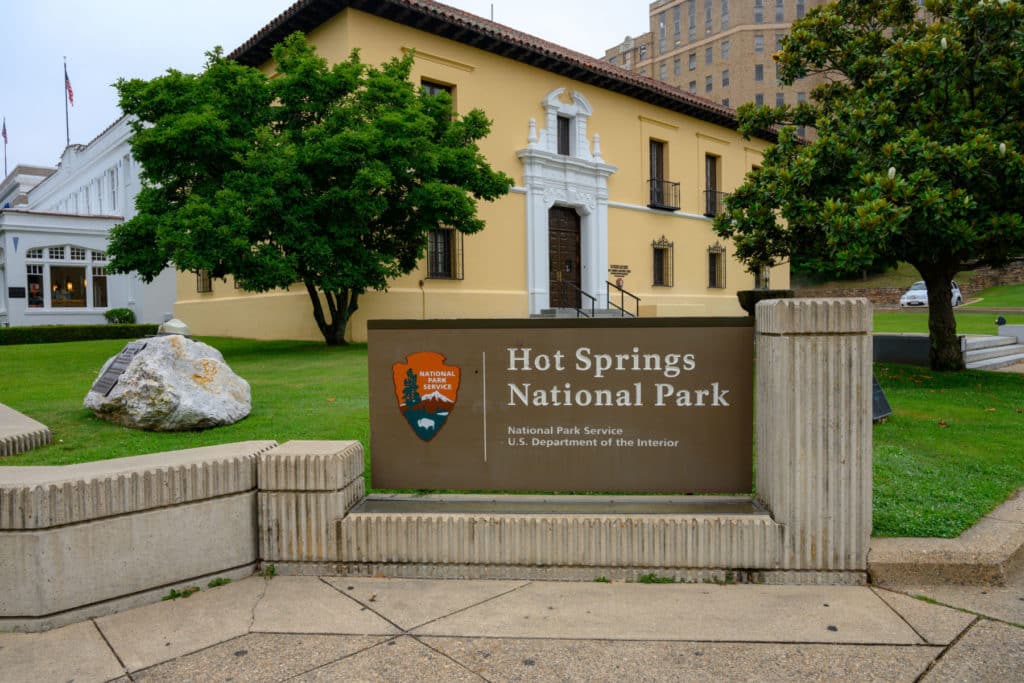
CHECK OUT: 10 AMAZING Facts About Badlands National Park
4. A Devastating Fire Destroyed Much Of Hot Springs
The most tragic of the Hot Springs National Park Facts has to do with a devastating fire which destroyed much of the area.
Just as Hot Springs Reservation was reestablished as government property, a devastating fire swept up the valley, destroying most of the south and central downtown area but leaving the Arlington and Grand Central Hotels, the Hale, Rector, and Big Iron Bathhouses, and the buildings to their north.
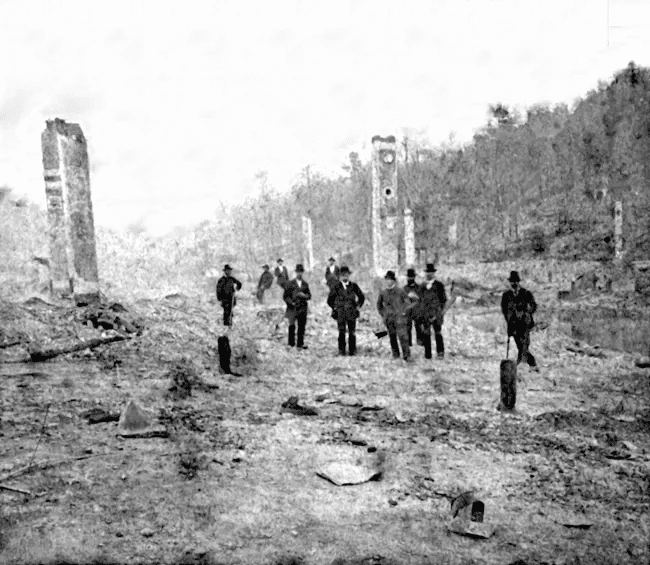
The structures were in general rough, utilitarian, and in poor repair.
Many townspeople considered the great fire of 1878 to be more a blessing than a tragedy, since it cleared the way for new construction that was more substantial and attractive.

CHECK OUT: 12 AMAZING Facts About Big Bend National Park
5. Hot Springs Actually Supports 47 Naturally Heated Springs
One of my favorite Hot Springs National Parks Facts has to do with its incredible hot springs ecosystem.
The incredible ecosystem actually supports 47 naturally heated springs.
As a matter of fact, Hot Springs National Park is the only unit of the national park system that is actually mandated to give away its primary natural resource (thermal mineral water) to the general public in its unaltered state.
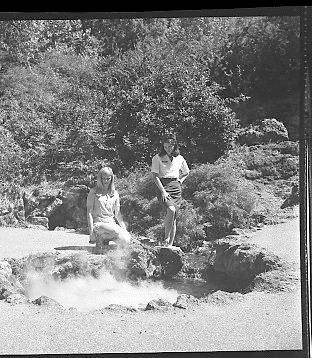
Most of the flow path of these thermal springs is hidden beneath the Ouachita Mountains and surrounding valleys, which are also protected by conservationists in order to preserve the natural hydrological system that feeds the springs.
Another interesting fact is that these soothing hot mineral pools were believed to have been used by the Quapaw and Caddo peoples 3,000 years ago.
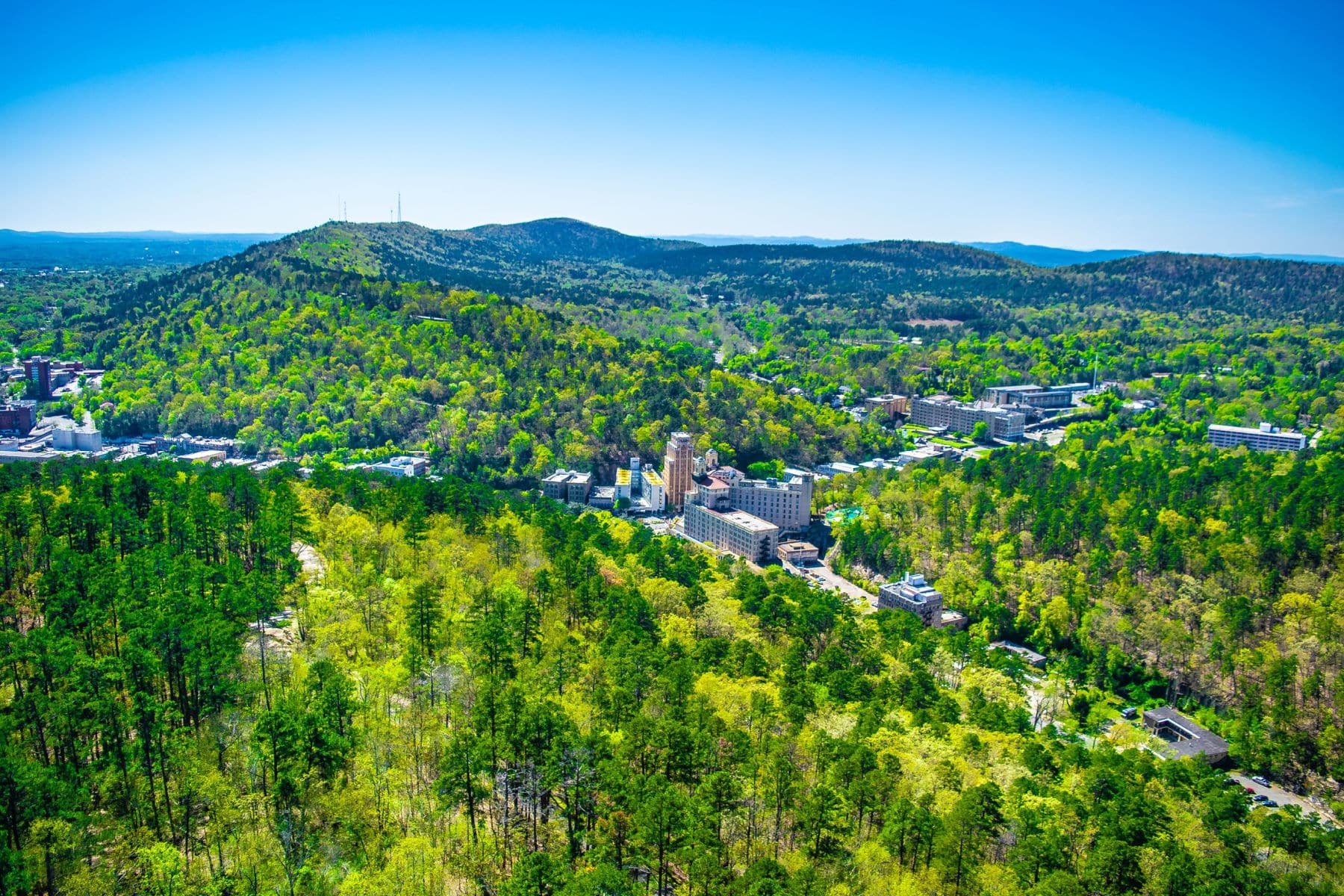
CHECK OUT: 14 AMAZING Facts About Biscayne National Park
Top 10 Hot Springs National Park Facts
6. Hot Springs Is “America’s Spa”
Just when you thought we couldn’t come up with any more unbelievable Hot Springs National Park Facts we’ve come up with another one.
Hot Springs National Park is often referred to as “America’s Spa” because of its famous natural hot springs. The park is home to 47 hot springs that flow from the southwestern slope of Hot Springs Mountain. These thermal waters are heated by the geothermal energy from the Earth’s core and are said to have healing properties.
Visitors to Hot Springs National Park can experience the hot springs in a variety of ways, including taking a bath in one of the traditional bathhouses that line Bathhouse Row, hiking the trails that lead to the hot springs, or simply enjoying the scenery and the park’s other attractions.
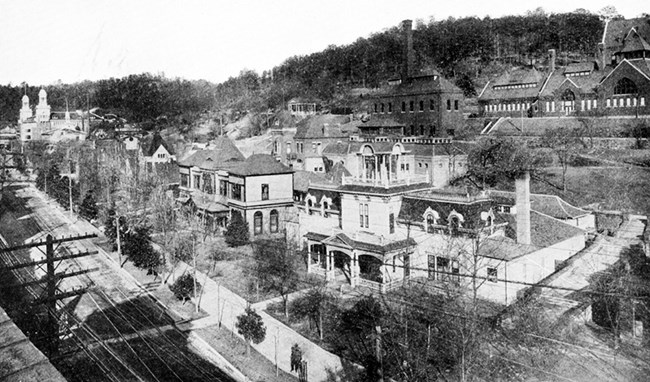
The first bathhouses were crude structures of canvas and lumber. These were little more than tents perched over individual springs or reservoirs carved out of the rock.
Keep in mind that this was before the invention of Jacuzzis.
As these places increased in popularity, the original construction was replaced with the masonry and steel bathhouses that we see today.

Prominent People Came To Visit The Hot Springs
Prominent people came to Hot Springs National Park to find healing in its soothing, warm waters. These visitors included: Al Capone, Herbert Hoover, Jesse James, Helen Keller, John F. Kennedy, Babe Ruth, and Cy Young.
I guess you never know who’ll you meet in a bathhouse.
CHECK OUT: 10 SURPRISING Congaree National Park Facts
7. America’s Premier Architect Played A Role In The Hot Springs National Park Story
One of my favorite Hot Springs National Parks Facts is one of the least known.
Beginning in the 1890s, the Interior Department appointed U.S. Army Captain John R. Stevens to oversee a number of ambitious landscaping and building projects.
The original plan was to hire Frederick Law Olmsted. I don’t know how much you know about Olmstead, but he was the man who practically invented landscape architecture in the United States.

Frederick Law Olmstead
Regarded as the founder of American landscape architecture, Frederick Law Olmsted (1822–1903) is best known for designing the grounds of New York City’s Central Park, the U.S. Capitol in Washington, D.C., the Biltmore Estate in North Carolina, and the 1893 World’s Columbian Exposition in Chicago.
After a series of misunderstandings and mutual dissatisfaction, however, Olmsted withdrew his firm from the project.

Learning More About Olmstead
Now as a retired history teacher, if you read these articles you’re likely to get a book recommendations from me too.
I finished reading a wonderful book about Frederick Law Olmstead. It’s called Genius of Place: The Life of Frederick Law Olmsted by Justin Martin.
I would definitely recommend it if you want to learn more about the man who designed New York City’s Central Park and so many other iconic structures.
8. There Are 26 Miles of Hiking Trail Inside Hot Springs National Park
If you’re someone who loves a good hike then this next Hot Springs National Park Fact is for you.
The park contains about 26 miles worth of walking paths and hiking trails, including the Hot Springs and North Mountain Trails and the West Mountain Trails, both of which are considered short and are interconnected.
For something more challenging, hikers can choose to tackle the longer Sunset Trail, which travels through the more remote wilderness areas of the park.
There is also camping available at the Gulpha Gorge Campground that can accommodate both tents and RVs.

CHECK OUT: 10 FASCINATING Facts About Cuyahoga Valley National Park
9. Hot Springs National Park Has A Gangster Museum
In addition to exploring the magnificent bathhouses or enjoying a soothing steam bath, you can also hike along the Grand Promenade which provides lovely shaded views above the bathhouses or visit the Hot Springs Mountain Tower where you will enjoy a breathtaking view.
While you’re there, you might also want to visit the Gangster Museum. It’s dedicated to the infamous history of the notorious mafiosos who spent time in Hot Springs, including: Al Capone, Meyer Lansky, Frank Costello, Albert Anastasia, and “Lucky” Luciano.
Luciano wasn’t too lucky while visiting Hot Springs however. He was arrested by the local police.
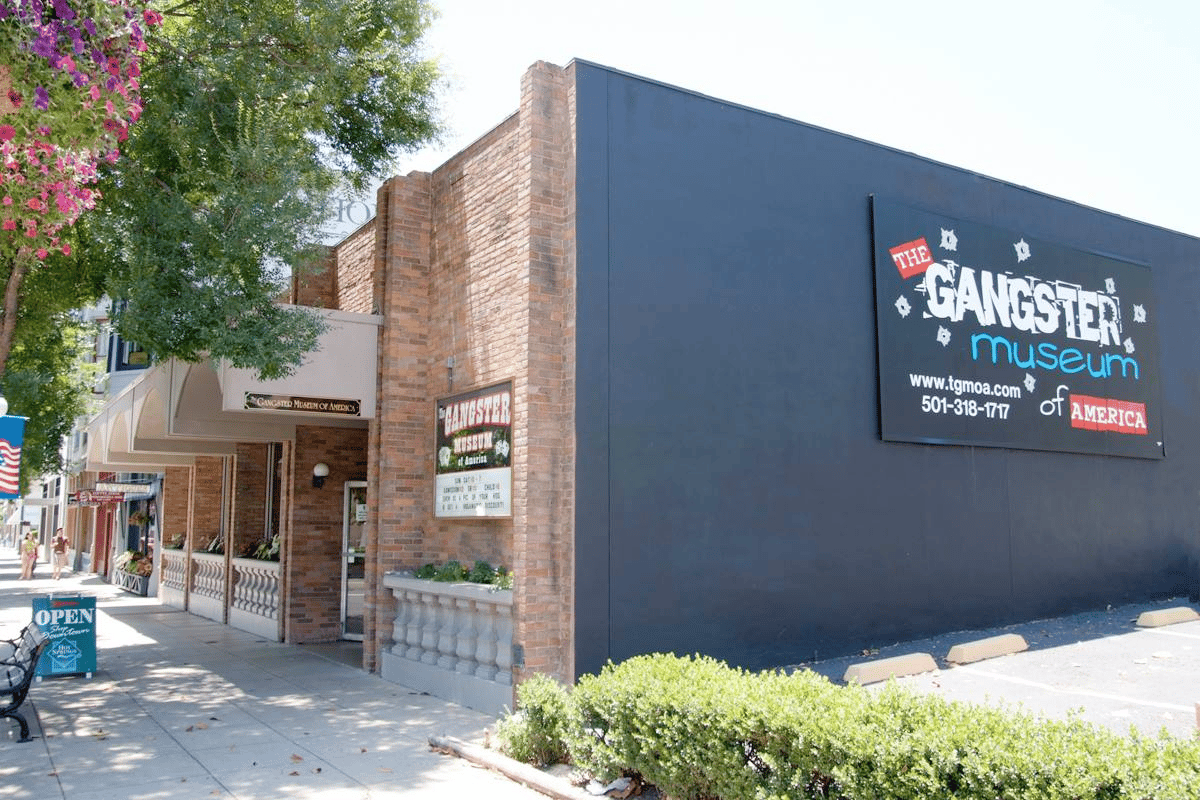
Take Yourself Back To The Roaring 20s
Visitors can take themselves back to the days of the 20’s, 30’s, and 40’s when mineral water, gambling, bootlegging, and other extreme pleasures brought visitors from all over the world to Hot Springs, Arkansas.
The Gangster Museum of America is a museum located in Hot Springs, Arkansas that aims to provide an historical and entertaining account of how some of the most notorious criminals in America co-existed with the population of this small town in the mountains of central Arkansas.
The museum features seven galleries with an audiovisual experience that is said to be worth the price of admission.
Visitors can also play in the antique casino and hear stories from a historian in the museum theater that are said to be fascinating, informative, and educational.
The museum aims to provide an insight into the history of crime and gangsters in America and how they interacted with the population of Hot Springs.
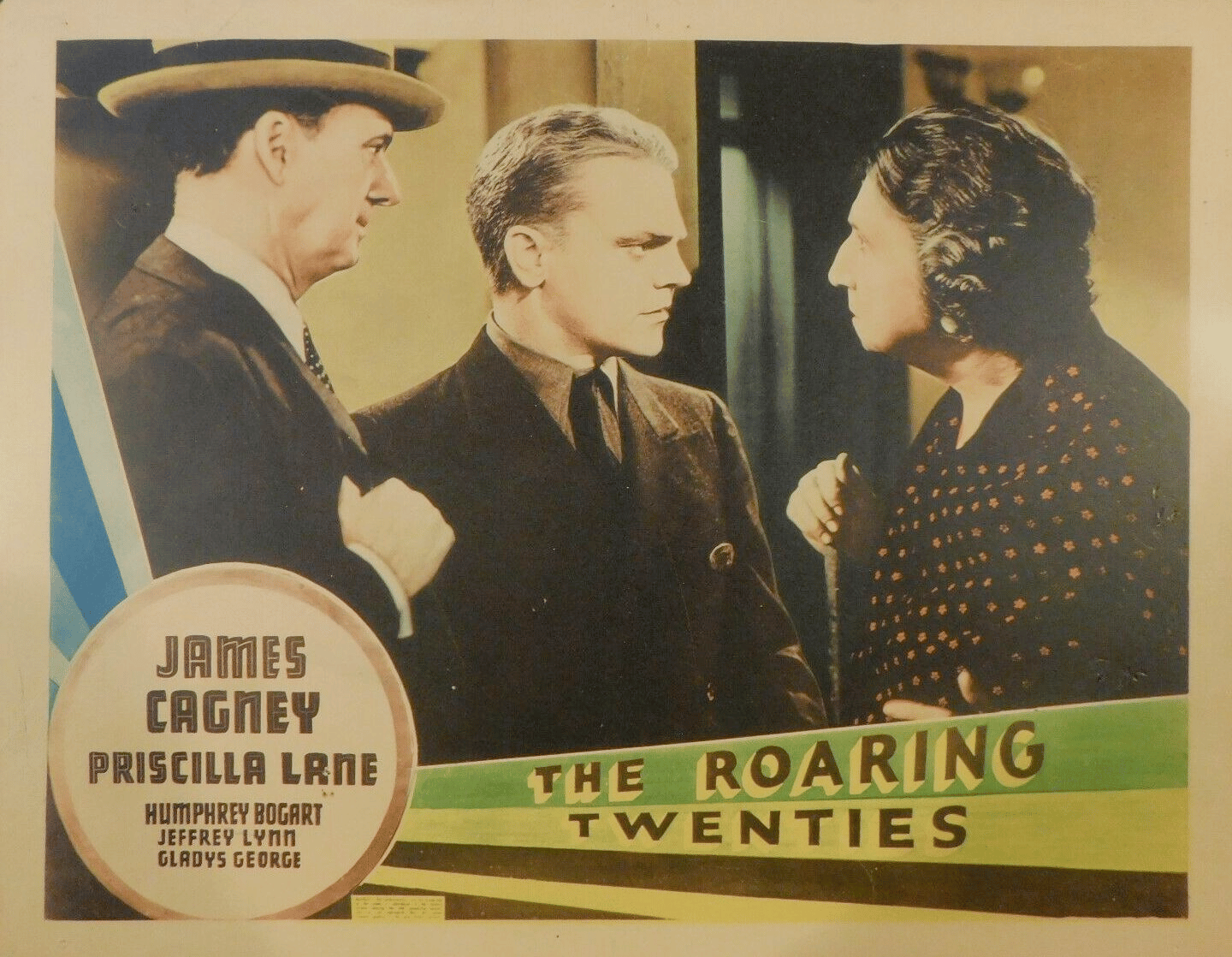
CHECK OUT: 15 (FASCINATING) Death Valley National Park Facts You Probably Didn’t Know
10. The Water Is Safe To Drink
One of the most surprising of our Hot Springs National Park Facts is that the water is actually safe to drink.
According to the National Park Service, the thermal water at Hot Springs National Park is nearly 4,000-year-old spring water in its natural state.
The water’s high temperature kills most harmful bacteria, and it is monitored to U.S. standards for safe drinking water.
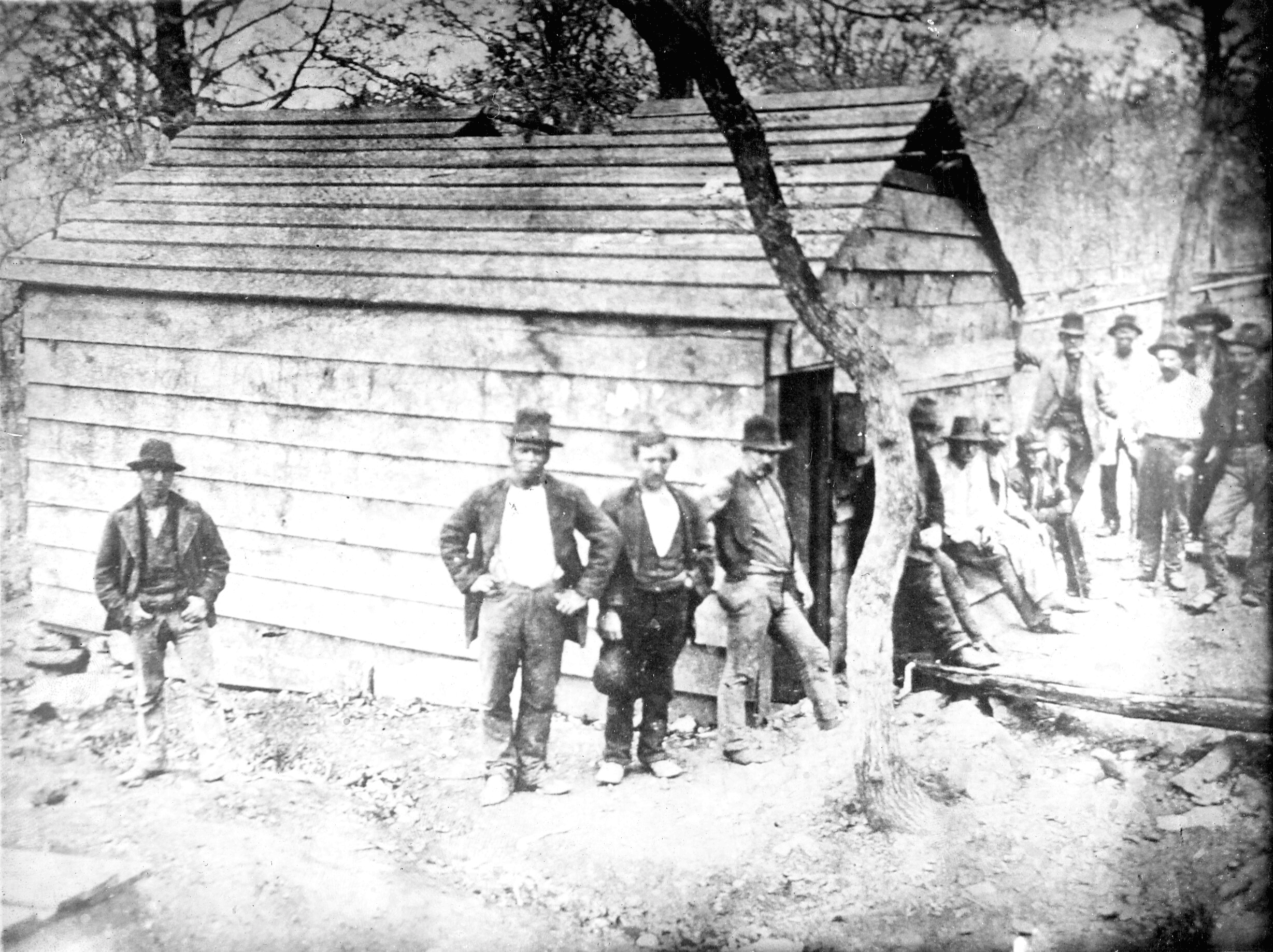
Legionella bacteria have been identified in some water samples and can present a risk of illness if water is inhaled, particularly to those with compromised immune systems or other medical conditions. The park and partners are working to reduce this risk.
At this time, the concern does not lie with bathing or with drinking water, as inhalation is not common with these activities and the high temperatures of the drinking water is sufficient to kill bacteria.
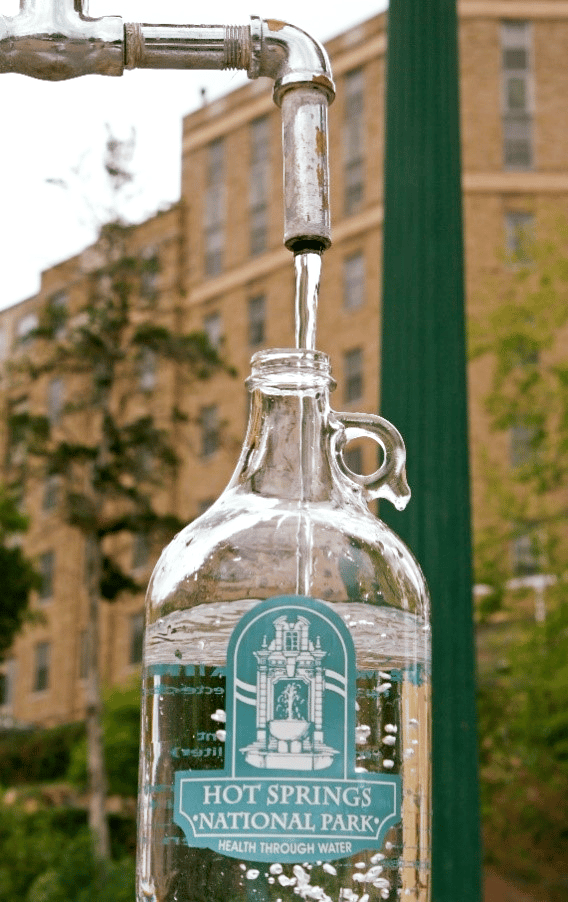
You Can Soak In The Springs
Bathhouse Row has two facilities that offer visitors the chance to fully submerge and relax in the thermal water. The thermal springs are piped directly into both of these bathhouses, offering users a true and authentic experience of the water. These facilities are:
- The Buckstaff Bathhouse – Orginally opened in 1912, the Buckstaff is the only facility on the Row that has never fully closed since it first started offering baths. For information about services, rates, and reservations, please visit their website or call them directly at (501) 623-2308.
- The Quapaw Bathhouse – The Quapaw Bathhouse offers modern day spa services with amenities like thermal pools, private baths, and a steam cave. For information about services, rates, and reservations, please visit their website or call them directly at (501) 609-9822. (Source: NPS)

Top 12 Hot Springs National Park Facts
11. The Park Contains No Endangered Species
If you’re someone who loves to watch wildlife then you’ll be pleased to learn about our next Hot Springs National Park Fact.
Hot Springs contains no federally endangered or threatened species.
Hot Springs is home to plenty of unique flora and fauna, but there are no species known to be threatened or endangered that live within the boundaries of the park.
Visitors regularly report coming across white-tailed deer and a variety of birds. Other species found in the park, like the Southeastern myotis bat, are considered a species of concern in the state of Arkansas.
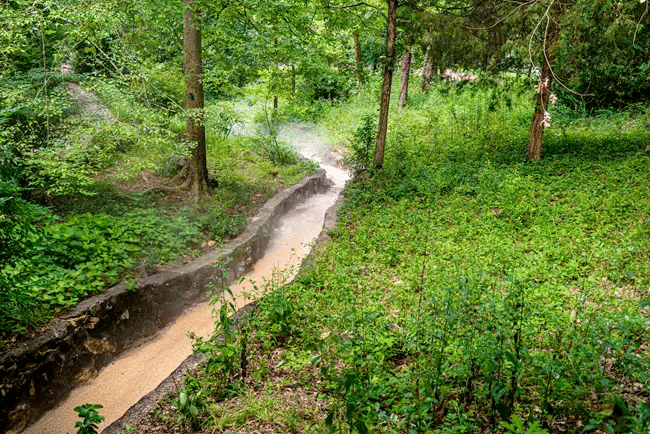
12. The Springs Are Not Volcanic
Our final Hot Springs National Park Fact has to do with the source of the springs heat. Visitors to Hot Springs tend to think of it as originating through volcanic activity.
While, in the case of some hot springs, there is an association with volcanoes, this is not true in the case of Hot Springs National Park.
These springs are as a result of a combination of rock types and fracture that are formed along with the Ouachita Mountains.
In other words, these springs are not volcanic.
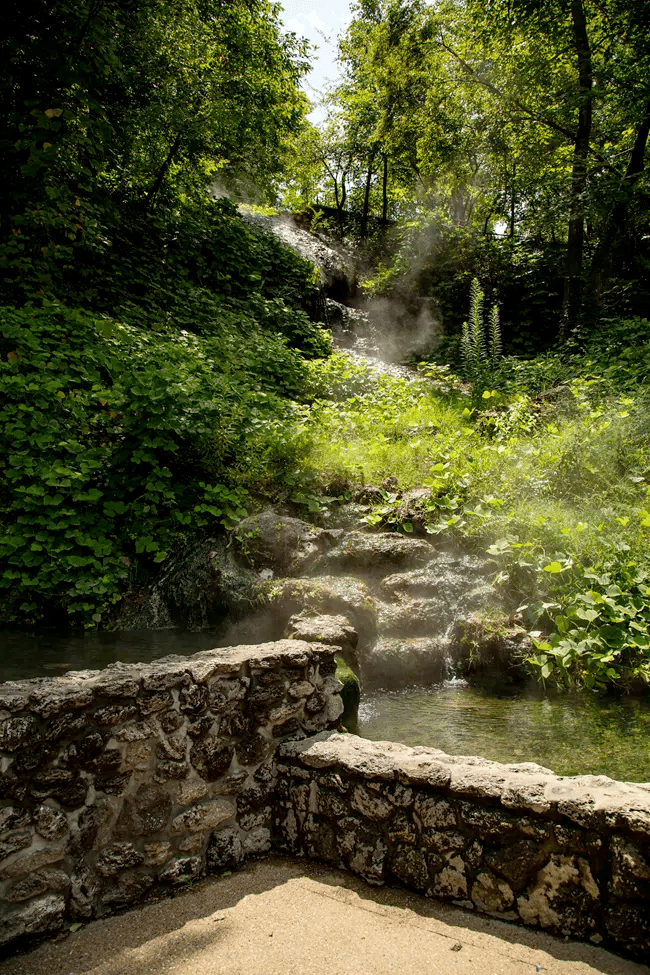
Why Trust Us About Hot Springs National Park?
We’re Jim Pattiz and Will Pattiz, collectively known as the Pattiz Brothers (and sometimes the Parks Brothers) and we absolutely LOVE the national parks.
You should probably know that we don’t just make this stuff up out of thin air. We’ve spent our entire adult lives exploring and filming America’s national parks and public lands.
We’ve worked with the National Park Service, the Department of Interior, USDA, and the U.S. Forest Service for years creating films on important places and issues. Our work has been featured in leading publications all over the world and even some people outside of our immediate family call us experts on the national parks.

Meet The Parks Brothers
Map Of Hot Springs National Park Facts
List Of Hot Springs National Park Facts
- The Dunbar-Hunter Expedition Came To Hot Springs In 1804
- The Area Which Is Now Hot Springs National Park First Became Part Of The U.S. As A Part Of The Louisiana Purchase
- Hot Springs Was Originally Set Aside As A Reservation
- A Devastating Fire Destroyed Much Of Hot Springs
- Hot Springs Actually Supports 47 Naturally Heated Springs
- Hot Springs Is “America’s Spa”
- America’s Premier Architect Played A Role In The Hot Springs National Park Story
- There Are 26 Miles of Hiking Trail Inside Hot Springs National Park
- Hot Springs National Park Has A Gangster Museum
- The Water Is Safe To Drink
- The Park Contains No Endangered Species
- The Springs Are Not Volcanic
We Hope You’ll Follow Our Journey
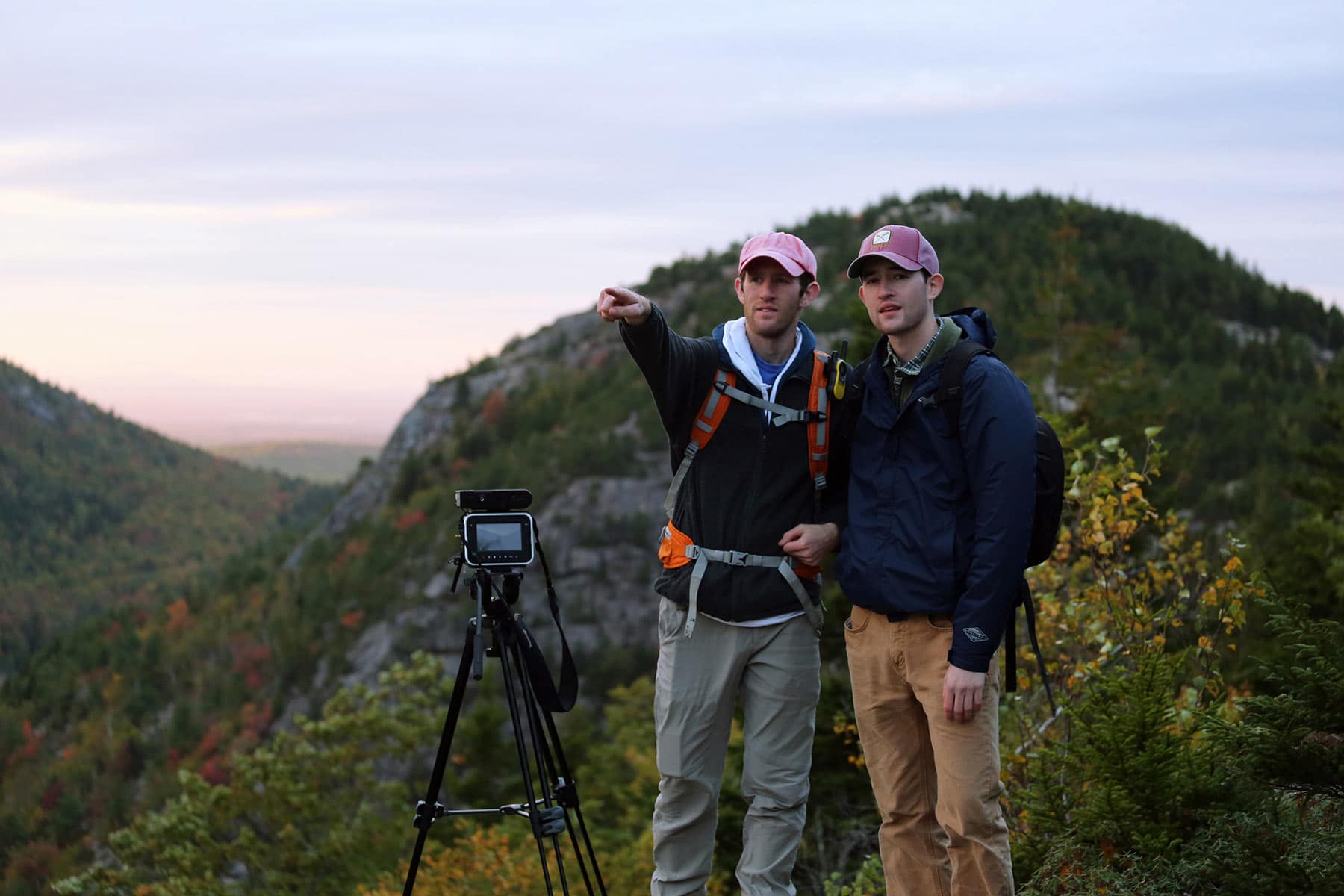
Our goal here at More Than Just Parks is to share the beauty of America’s national parks and public lands through stunning short films in an effort to get Americans and the world to see the true value in land conservation.
We hope you’ll follow our journey through the parks and help us to keep them the incredible places that they are. If you’re interested in joining the adventure then please sign up below!
Helpful Articles
Arkansas National Parks: 7 Epic Arkansas National Parks
National Parks: All 63 National Parks Ranked By Experts
National Monuments: Ultimate List Of National Monuments
Landmarks: 25 Famous Bucket List Landmarks In America (MUST-SEE)
Park Rangers: A Brief (& Informative) History Of America’s National Park Rangers
Gifts: 50 BEST National Park Gifts For The National Park Fan In Your Life
Books: 45 BEST National Parks Books
Revolutionary War Sites: 10 BEST Revolutionary War Sites In America
Civil War Sites: 10 BEST Civil War Sites In America
Civil Rights Sites: 10 BEST Civil Rights Sites In America
National Parks In Movies: Look Familiar? 25+ CLASSIC Movies Filmed In The National Parks
Television Shows: Look Familiar? 10+ CLASSIC Television Shows Filmed In The National Parks
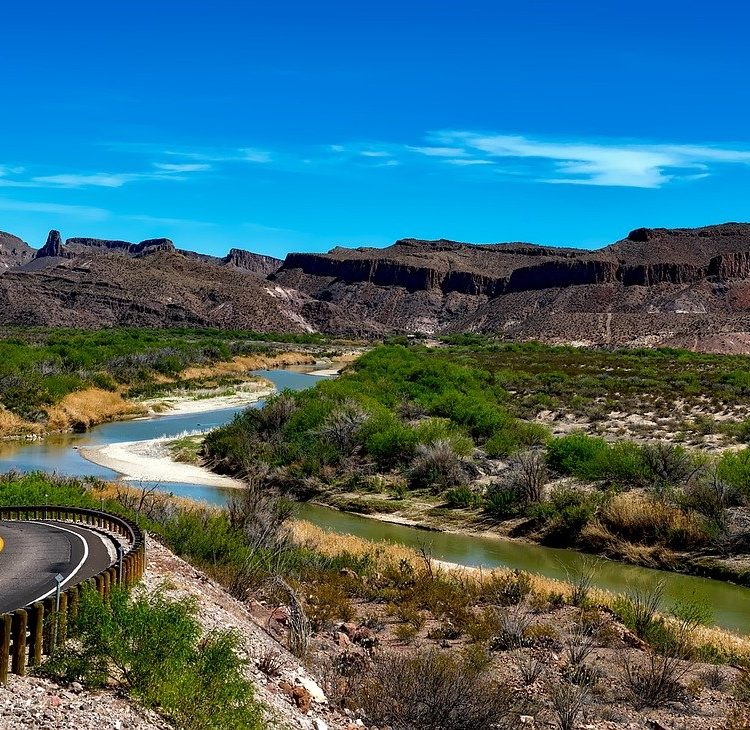
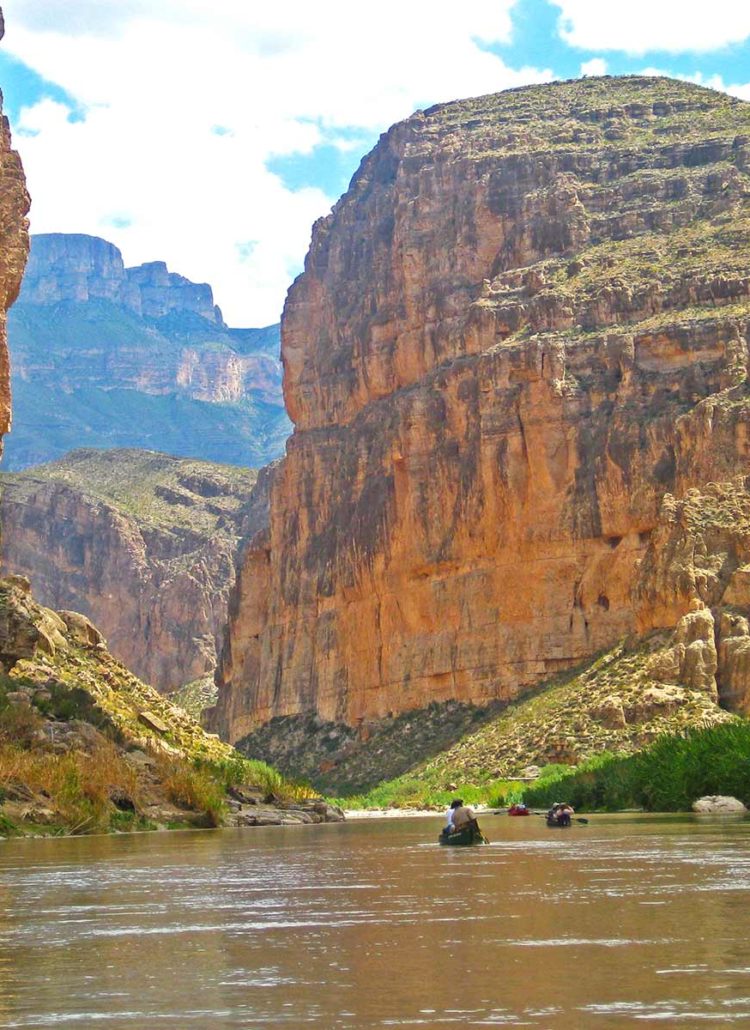
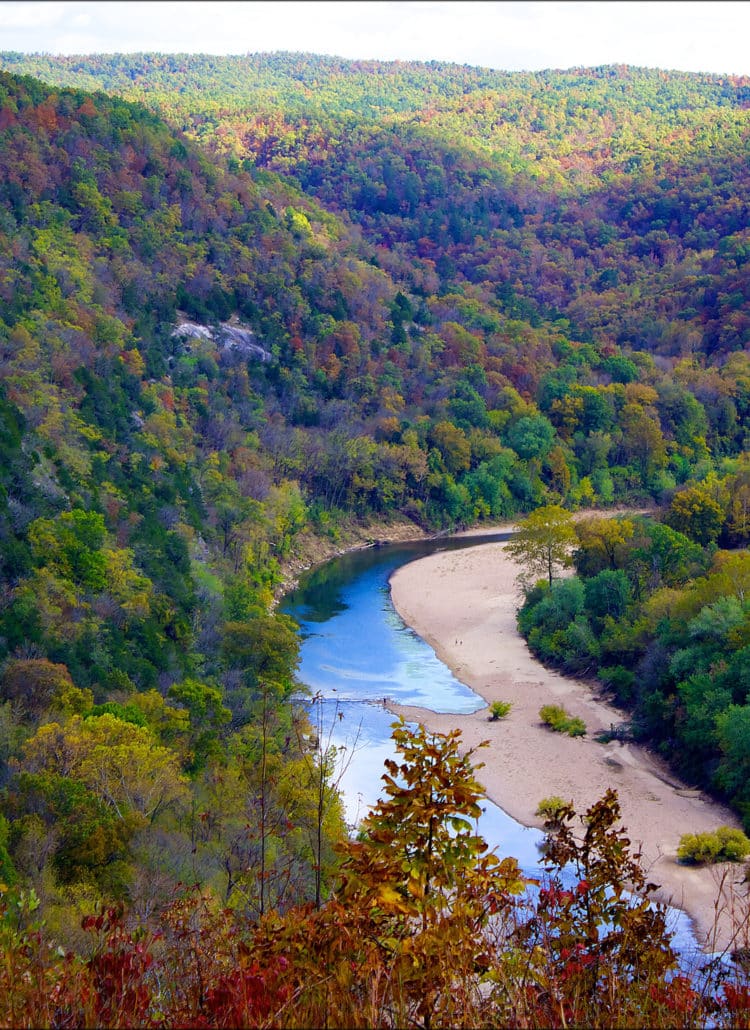
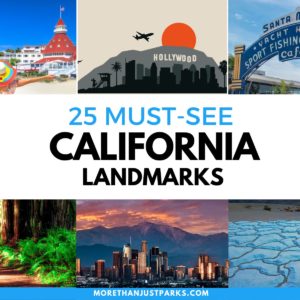

Leave a Reply